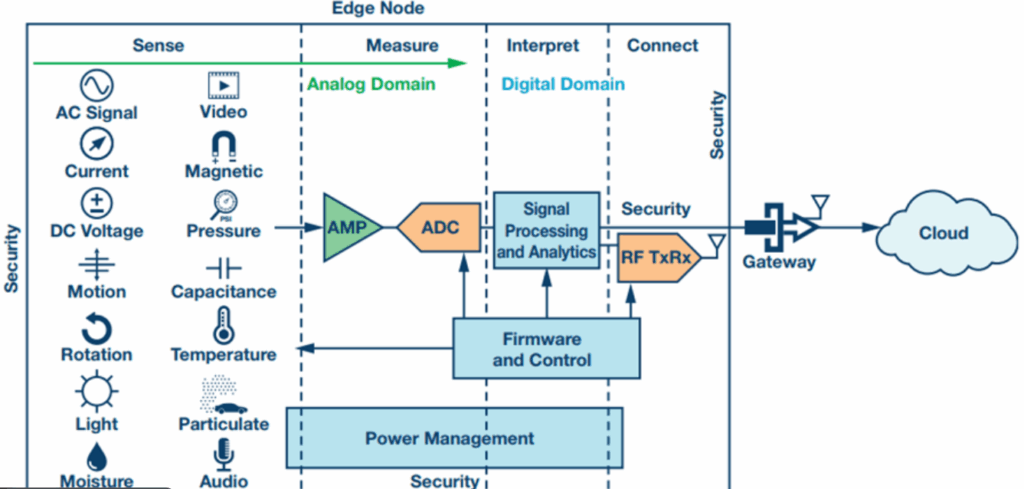Introduction
We are moving from a world where compute power is largely centralised (in large data-centres and clouds) to one where processing happens closer to the device, at the “edge”. The edge-computing paradigm—where data is processed on or near the device that generates it—is redefining how computing architectures are designed, how latency is managed, and how devices connect.
Why the shift to edge?
- With billions of IoT devices, mobile sensors, smart actuators generating massive data-streams, it becomes inefficient (and sometimes infeasible) to send all data to a central cloud for processing.
- For latency-sensitive applications (e.g., autonomous vehicles, industrial automation, AR/VR), the time-delay of transmitting data to the cloud is unacceptable.
- Data-privacy and local-regulation concerns often drive processing to happen closer to or on the device/edge.
- Bandwidth constraints and cost incentivise reducing upstream data flows.
According to one source, “by 2025 the fraction of enterprise-generated data processed outside a traditional data centre is predicted to reach as high as 75 %.” Wikipedia
What does this mean for computing systems?
- Hybrid architectures: Cloud + edge + device continuum. Businesses need to design systems that span these layers.
- Hardware changes: Edge servers, mini-data centres, micro datacentres, embedded compute in devices become critical.
- Software and orchestration: Edge orchestration, “fog computing”, containerised services at the edge, distributed AI inference.
- New business models: Services become more location-aware, real-time, contextual. E.g., factory floor analytics, real-time video analytics at the edge, smart city infrastructure.
Implications for the computer hardware market
- Demand for compact, ruggedised, low-latency compute platforms designed for edge deployment.
- Need for cooling, power-efficient designs in constrained environments (on-site factories, remote installations).
- Network architecture considerations: 5G/6G, private LTE, edge clusters.
- Data centre vs edge trade-offs: device vendors and system integrators will offer both cloud and edge compute bundles.
How this trend affects Neutron Computers and your clients
- Opportunity to offer custom edge-computing builds: tailored servers, ruggedised machines, specialised hardware for on-site compute.
- Consulting value-add: help clients design hybrid compute strategies (cloud + edge) and select hardware accordingly.
- Highlight your ability: “We don’t just build PCs – we design compute-solutions that integrate into your environment, whether it’s a server rack in your building or devices at the edge of your network.”
- Differentiate with service & support: Many clients entering edge-compute space may lack expertise; offering managed hardware + installation + maintenance becomes a value-adder.
Key challenges to watch
- Security: Edge nodes are more exposed (physical access, network vulnerabilities) than centralised data-centres.
- Maintenance & manageability: Distributed hardware means remote monitoring, updates, lifecycle management are complex.
- Integration: Ensuring edge nodes integrate with cloud systems, adhere to data governance, sync reliably.
- Cost-effectiveness: Edge hardware can be more expensive per compute-unit; the savings must come via reduced latency, better data-utilisation, or compliance/sovereignty.
Case example / use-case
Consider a manufacturing client with thousands of sensors on conveyor lines generating real-time video/thermal data. Instead of streaming raw video to the cloud, an edge server onsite performs analytics (defect detection, anomaly alerts) and only critical summaries are sent upstream. This reduces bandwidth, ensures near-instant response, and keeps sensitive data onsite. Neutron Computers could supply the hardware, configure the software stack, and provide ongoing support.
Conclusion
Edge computing is no longer a niche concept—it’s becoming a mainstream architectural requirement as devices proliferate and latency/data-governance demands increase. For a computer‐hardware specialist like Neutron Computers, recognising this shift opens new service lines, new hardware configurations, and the chance to position yourself as a strategic partner in this transition.
